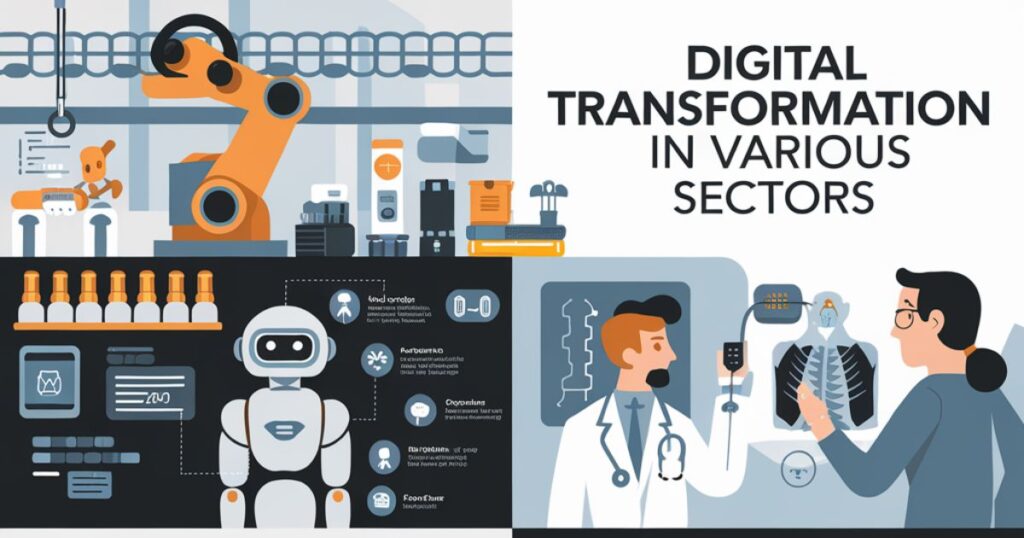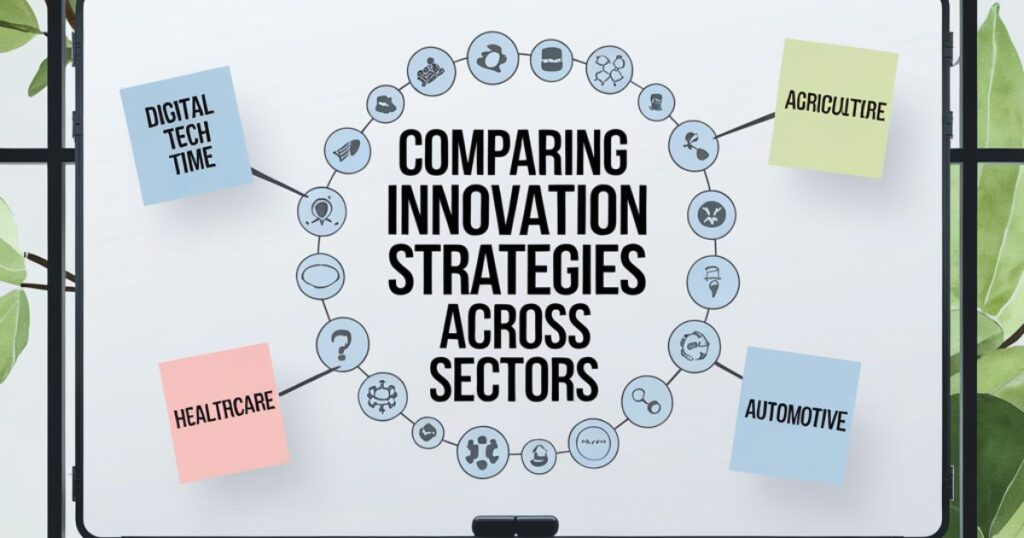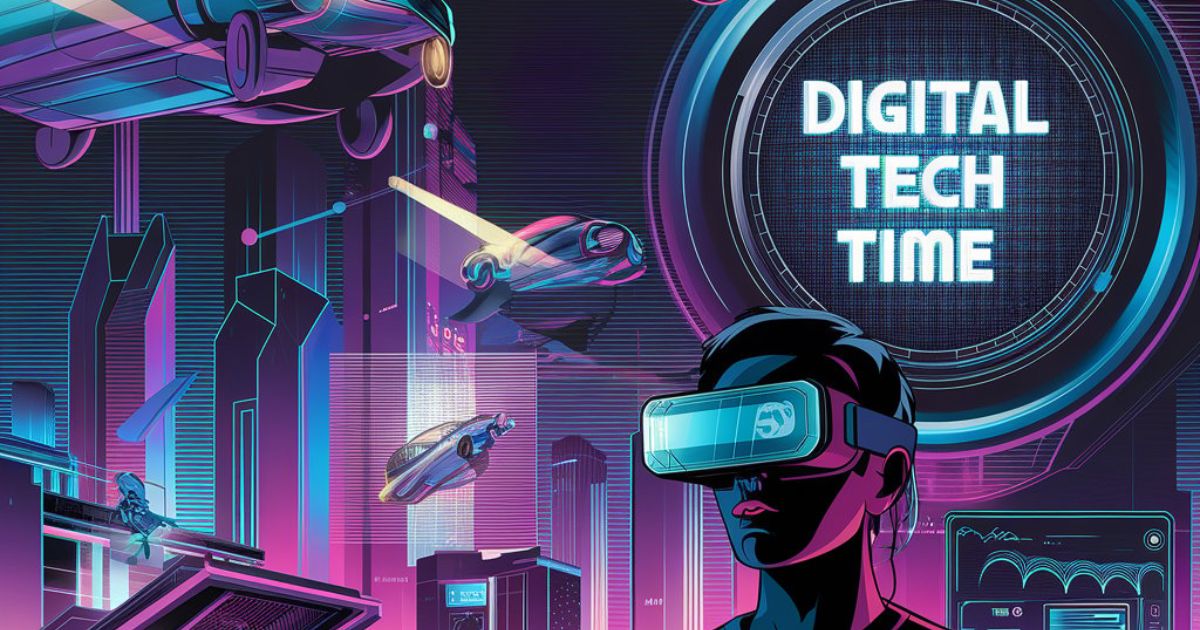In the ever-evolving landscape of technology, 2024 stands out as a pivotal year for digital innovation. As we dive into the heart of this tech revolution, it’s clear that Digital Tech Time isn’t just a buzzword – it’s the driving force behind transformative changes across industries.
From healthcare to finance, retail to education, the rapid adoption and integration of cutting-edge technologies are reshaping how we live, work, and interact. Let’s explore why Digital Tech Time is the ultimate game-changer and what it means for businesses and individuals alike in 2024.
What is Digital Tech Time?
Digital Tech Time refers to the unprecedented acceleration in the development, adoption, and integration of digital technologies across various sectors. It’s not just about having the latest gadgets; it’s about how quickly businesses and society at large are embracing and leveraging these technologies to drive innovation and efficiency.
In 2024, we’re witnessing a perfect storm of technological advancements:
- Artificial Intelligence (AI) and Machine Learning
- Blockchain technology
- Cloud computing and edge computing
- The Internet of Things (IoT)
- 5G and advanced connectivity
These technologies aren’t operating in isolation. They’re converging to create a synergistic effect, propelling us into a new era of digital transformation. The speed at which these technologies are being adopted and integrated is what defines Digital Tech Time.
Consider this: In 2020, many businesses were just beginning to explore remote work options. Fast forward to 2024, and we’re seeing fully integrated virtual offices powered by VR and AR technologies, with AI assistants managing schedules and facilitating seamless collaboration across continents. This rapid evolution epitomizes Digital Tech Time.
Digital Transformation in Various Sectors

The impact of Digital Tech Time is far-reaching, touching virtually every industry. Let’s take a closer look at how different sectors are experiencing this digital revolution:
Healthcare and Digital Tech Time
The healthcare industry has been at the forefront of digital innovation, especially in the wake of global health challenges. Here’s how Digital Tech Time is revolutionizing patient care:
- Telemedicine: Virtual consultations have become the norm, providing access to healthcare services regardless of geographical barriers.
- AI-powered diagnostics: Machine learning algorithms are assisting in early disease detection and personalized treatment plans.
- Wearable health tech: Devices like smartwatches are now capable of monitoring vital signs and alerting users to potential health issues in real-time.
Case Study: In 2024, a major U.S. hospital network reported a 40% reduction in readmission rates after implementing an AI-driven patient monitoring system that uses data from wearable devices to predict and prevent health complications.
The integration of Electronic Health Records (EHRs) with AI has also transformed how healthcare providers manage patient information. In 2024, we’re seeing EHRs that not only store data but also provide predictive insights, suggesting potential diagnoses and treatment options based on a patient’s history and current symptoms.
Finance and Digital Tech Time
The financial sector has always been quick to adopt new technologies, and Digital Tech Time is no exception. Here’s what’s happening in finance:
- Blockchain and cryptocurrency: Decentralized finance (DeFi) platforms are challenging traditional banking systems.
- AI-driven financial advice: Robo-advisors are making investment strategies accessible to a broader audience.
- Mobile banking apps: These are evolving to offer more than just basic transactions, integrating budgeting tools and personalized financial insights.
“The fusion of AI and blockchain in fintech is not just an innovation; it’s a revolution in how we perceive and handle money.” – Sarah Johnson, Chief Innovation Officer at TechFin Solutions
In 2024, we’re seeing the rise of “smart contracts” powered by blockchain technology. These self-executing contracts with the terms of the agreement directly written into code are streamlining processes in industries from real estate to supply chain management, reducing the need for intermediaries and increasing transparency.
Retail Innovation in Digital Tech Time
The retail landscape has undergone a dramatic transformation, with e-commerce leading the charge:
- Augmented Reality (AR) shopping experiences: Customers can now “try on” clothes or visualize furniture in their homes before making a purchase.
- Personalized marketing: Big data analytics are enabling retailers to offer hyper-personalized product recommendations and promotions.
- Seamless omnichannel experiences: The line between online and offline shopping is blurring, with technologies like IoT enabling smooth transitions between digital and physical retail spaces.
Table: E-commerce Growth in the U.S. (2020-2024)
| Year | E-commerce Sales (in billions) | % of Total Retail Sales |
| 2020 | $791.70 | 14.0% |
| 2022 | $1,050.70 | 16.4% |
| 2024 | $1,366.80 (projected) | 19.2% (projected) |
The concept of “phygital” retail – blending physical and digital experiences – has come to fruition in 2024. Smart fitting rooms equipped with AR mirrors allow customers to try on virtual outfits, while IoT-enabled shelves in physical stores update inventory in real-time, syncing with online platforms to provide accurate stock information to both in-store and online shoppers.
Education and Digital Tech Time
The education sector has embraced Digital Tech Time with open arms, leading to a revolution in learning:
- E-learning platforms: Coursera and Udemy have seen exponential growth, offering courses from top institutions worldwide.
- Gamification: Educational games and interactive simulations are making learning more engaging and effective.
- AI tutors: Personalized learning experiences are being created through AI-powered adaptive learning systems.
In 2024, we’re seeing the emergence of “micro-credentials” – bite-sized, specialized qualifications that allow learners to upskill quickly in response to rapidly changing job market demands.
These are often delivered through a combination of VR-based practical training and AI-guided theoretical learning, allowing for highly personalized and efficient education pathways.
Comparing Innovation Strategies Across Sectors

While each sector has its unique approach to digital innovation, there are common threads in how they’re leveraging Digital Tech Time:
- Data-driven decision making: Across the board, businesses are using big data analytics to inform strategies and improve operations.
- Customer-centric approaches: Whether it’s patients, students, or shoppers, the focus is on creating personalized experiences.
- Agile methodologies: Companies are adopting flexible, iterative approaches to keep pace with rapid technological changes.
- Ecosystem thinking: Businesses are increasingly recognizing the value of partnerships and collaborations to drive innovation.
For instance, in the automotive industry, we’re seeing car manufacturers partnering with tech companies to develop autonomous vehicles.
This collaboration brings together expertise in vehicle manufacturing with cutting-edge AI and IoT technologies, accelerating the development of self-driving cars.
Also Read: B88221141: The TikTok Sensation Taking America by Storm
Key Digital Technologies Fueling Innovation
At the heart of Digital Tech Time are several key technologies that are driving innovation across sectors:
- Artificial Intelligence and Machine Learning: From predictive analytics in healthcare to algorithmic trading in finance, AI is the backbone of many digital innovations.
- Internet of Things (IoT): Connected devices are creating smart homes, cities, and industries, generating vast amounts of actionable data.
- 5G and advanced connectivity: Faster, more reliable internet is enabling real-time applications and enhancing user experiences across the board.
- Cloud computing and edge computing: These technologies are providing the infrastructure needed to process and store the massive amounts of data generated in the digital age.
In 2024, we’re seeing these technologies converge in exciting ways. For example, edge computing combined with 5G is enabling real-time processing of IoT data, crucial for applications like autonomous vehicles where split-second decisions can be a matter of life and death.
The Role of Artificial Intelligence in Digital Tech Time

AI deserves special mention as it’s playing a pivotal role in accelerating Digital Tech Time. Here’s how:
- Automating routine tasks: This frees up human workers to focus on more complex, creative endeavors.
- Enhancing decision-making: AI-powered analytics are providing insights that were previously impossible to obtain.
- Enabling new products and services: From self-driving cars to AI-generated content, AI is opening up new possibilities across industries.
In 2024, we’re seeing the rise of “Explainable AI” – AI systems that can provide clear explanations for their decisions. This is particularly crucial in fields like healthcare and finance, where understanding the reasoning behind AI-driven decisions is essential for building trust and ensuring accountability.
The Importance of Cybersecurity in Digital Technology
As we embrace Digital Tech Time, the importance of cybersecurity cannot be overstated. With increased connectivity comes increased vulnerability to cyber threats. Businesses are investing heavily in:
- AI-powered security systems: These can detect and respond to threats in real-time.
- Blockchain technology: This is being used to create more secure, transparent systems for data storage and transactions.
- Employee training: Recognizing that human error is often the weakest link in cybersecurity.
In 2024, we’re seeing the emergence of “quantum-resistant” cryptography, designed to withstand potential attacks from quantum computers.
As quantum computing technology advances, this proactive approach to cybersecurity is becoming increasingly important.
The Human Side of Digital Tech Time

While we’ve focused largely on the technological aspects of Digital Tech Time, it’s crucial to consider its human impact. The rapid pace of digital transformation is creating new job opportunities but also rendering some traditional roles obsolete. In 2024, we’re seeing a growing emphasis on:
- Digital literacy programs: Ensuring that all members of society have the skills to participate in the digital economy.
- Ethical AI development: As AI becomes more prevalent, there’s an increased focus on developing AI systems that are fair, transparent, and respect human rights.
- Work-life integration: With digital technologies blurring the lines between work and personal life, there’s a growing discussion about digital well-being and the “right to disconnect.”
Conclusion
Digital Tech Time is not just changing the game; it’s creating entirely new games. As we look ahead to the rest of 2024 and beyond, it’s clear that the pace of digital innovation will only accelerate. Businesses that embrace this digital revolution, investing in the right technologies and fostering a culture of continuous innovation, will be the ones that thrive in this new era.
The key takeaway? Don’t just keep up with Digital Tech Time – strive to be at its forefront. Whether you’re a healthcare provider leveraging AI for better patient outcomes, a retailer creating immersive AR shopping experiences, or an educator designing personalized learning journeys, the opportunities are boundless.
As we navigate this exciting digital landscape, one thing is certain: Digital Tech Time is the ultimate game-changer, and 2024 is just the beginning. The future belongs to those who can adapt, innovate, and harness the power of digital technologies to create value in new and unexpected ways.
FAQ’s
What is digital tech time?
Digital Tech Time refers to the rapid pace at which digital technologies are being developed, adopted, and integrated across various sectors, driving innovation and transformation.
How does digital tech time affect corporations?
It pushes companies to innovate faster, adopt new technologies, and transform their business models to stay competitive in a rapidly evolving digital landscape.
What are some examples of digital tech time in different sectors?
Examples include telemedicine in healthcare, blockchain in finance, AR experiences in retail, and AI-powered personalized learning in education.
How can my business keep up with digital tech time?
Stay informed about emerging technologies, invest in digital skills training for employees, and foster a culture of innovation and agility within your organization.
What are the challenges related to digital tech time?
Key challenges include cybersecurity risks, data privacy concerns, keeping up with rapid technological changes, and managing the human impact of automation.
Why is innovation vital in the digital tech era?
Innovation is crucial for staying competitive, meeting evolving customer expectations, and leveraging new technologies to create value and solve complex problems.
What role does AI play in digital tech time?
AI is a cornerstone of Digital Tech Time, driving automation, enabling predictive analytics, and powering new products and services across industries.
Explore the latest news and insights from Echozynth and beyond at Echozynth.com

Kiara Arushi is the dedicated admin of this personal website, which serves as a comprehensive hub for general information across various topics. With a keen eye for detail and a passion for knowledge sharing, Kiara curates content that is both informative and engaging, catering to a diverse audience.
Her commitment to providing accurate and up-to-date information ensures that visitors find valuable insights and practical tips in every post. Whether you’re seeking the latest trends or timeless advice, Kiara’s expertise makes this site a trusted resource for all.


